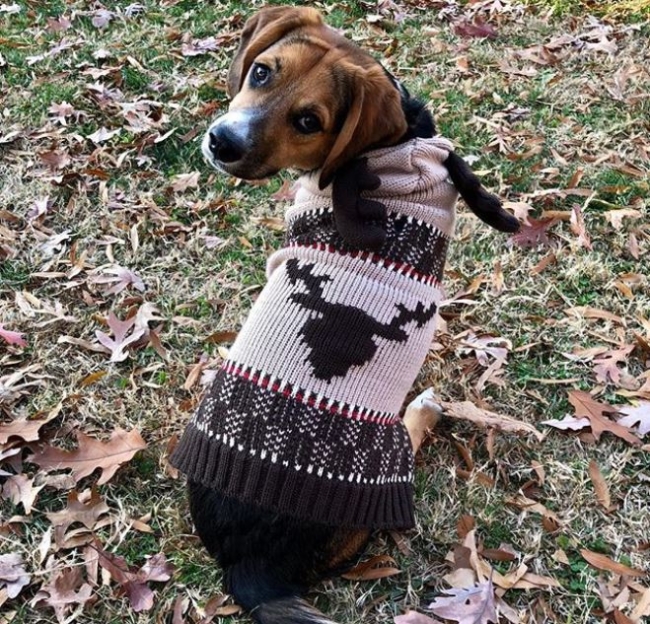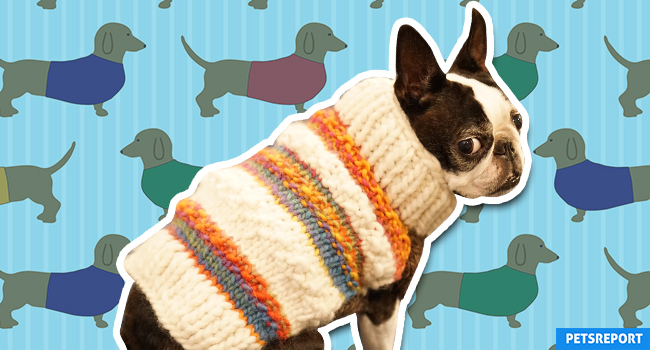With cold weather upon us, you may be wondering if your canine companion needs a dog sweater or a jacket to stay warm. If you have seen your dog shivering after spending time outside in the cold, you’ve likely asked yourself if a sweater is a necessity or if your dog will just look silly. While the right doggy sweater certainly makes a fashion statement, there are some practical benefits as well.
Dogs do come equipped with their own attached coats. However, different breeds have different fur. Hence, some dogs may not be genetically suited to the environments in which they live today. Dogs with lighter coats may, in fact, be extremely uncomfortable in colder temperatures. These dogs would appreciate an extra layer of protection from the elements.
Still on the fence about whether your furry friend really needs a dog sweater? Let’s take a closer look.
Dog Sweater for Cold Weather
When the temperature drops, you likely do not want to go outside without your sweater or jacket. The same is true for many dogs. If you find that your four-legged best friend is hesitant to go outside to do his business, he may be telling you that he is too cold. Your pup may also feel the chill if your home is drafty or you keep your heating system turned down low.
How warm your dog stays is dependent upon several factors, including breed, size and age.

Image by nuggetthefrenchienyc
While dogs curl up to conserve heat, they can only curl up so much. Larger dogs tend to be better equipped for cold weather. In fact, breeds like Saint Bernards, Alaskan Malamutes and Siberian Huskies love spending time outdoors during cold weather.
Many smaller, light-bodied breeds, however, do not fare so well during the winter months. Toy breeds like chihuahuas are especially susceptible to the cold, and most do well with an extra layer of insulation in the form of a dog sweater.
When determining whether your dog needs a sweater, it is also important to consider his age and health. Older dogs – like humans – tend to be a bit more prone to getting cold. Dogs with weakened immune systems and certain health problems that impair hair growth, such as hypothyroidism, also benefit from wearing sweaters during cold weather.
Choosing the Right Dog Sweater
A trip to a pet supply store will prove that there are a lot of doggy sweaters to choose from. When shopping, it is important to choose a quality dog sweater that will keep your pet warm and comfortable.
A proper fit is one of the most important factors. Before you go shopping, measure your dog’s neck and chest. Also, measure your furry friend’s length from the back of his neck to waist. The sweater you choose should stop near your dog’s waist area. Knowing your pooch’s exact weight may also help you select a sweater that is the right size.

Image by loganoflogancircle
The dog sweater you choose should fit snugly without being too tight. A sweater that is too loose is likely to get caught on things or drag on the ground. Your dog may also trip or chew on clothing that is too large. Clothing that is too tight could impede your pet from moving freely or pose a choking hazard. Make sure the neck and armpit area not too tight. If possible, take your dog shopping with you to try on clothes prior to making a purchase.
Choose a dog sweater made from high-quality material.
Wool sweaters are the warmest, and wool is one of the best insulating materials on the market. However, it is also itchy and thus can be uncomfortable for your pet. Wool may also be problematic if the sweater needs to be washed frequently. Most dog owners find that sweaters made with a blend of washable wool and cotton or acrylic work best.
Conclusion
Dressing your dog may seem silly. However, doing so could make cold weather a lot more tolerable for your canine companion.
Sweaters are beneficial for many dogs with thin, short coats and for dogs who are older or suffer from certain health conditions. Pay attention to the signs your canine companion gives you. If he seems cold, try getting a dog sweater and see if it helps.


Leave A Comment